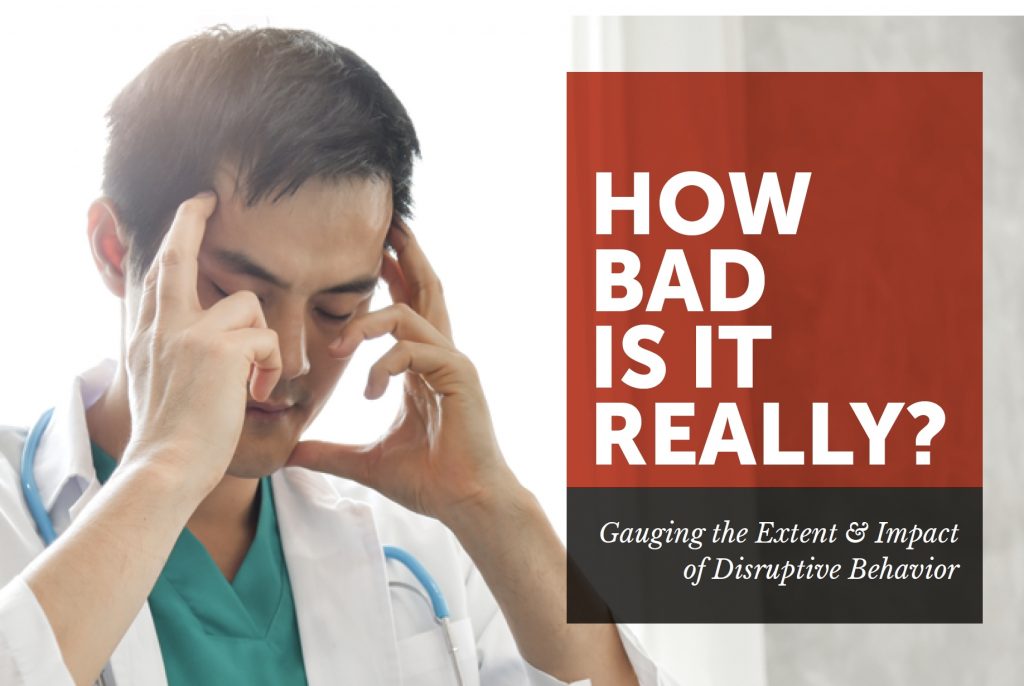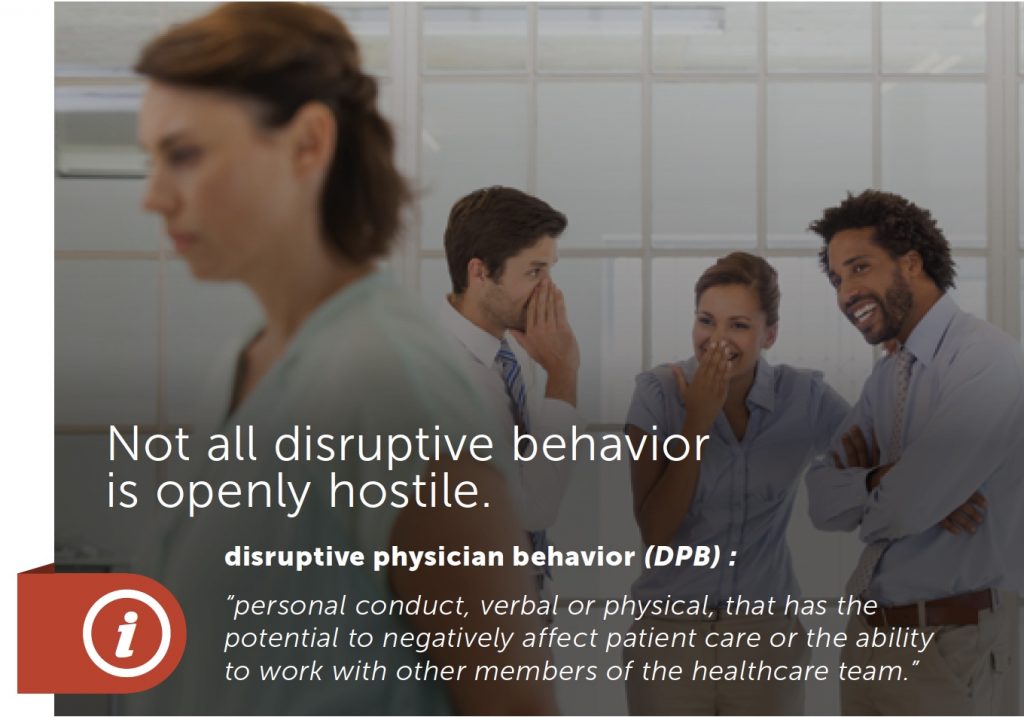Disruptive Behavior: How Bad Is It Really?
Disruptive Behavior: How Bad Is It Really?
Gauging the extent and impact of disruptive behavior

“As soon as you start to talk about disruptive health care professionals,” says PBI faculty member Catherine Caldicott, “people roll their eyes and say, ‘Oh yeah, I used to work with someone like that.’ It seems everybody has a story.” But she adds, “In terms of the number of people I see referred because of disruptive behavior, the number’s not that big.”
The apparent disparity is easily explained. Several studies have shown that a relatively small number of individuals are responsible for most of the disruption. In one survey, nearly 80% of those surveyed encountered problems with doctors’ behavior at least three to five times per year, but 70% said the problems were caused by the same small group of individuals.
The pattern shows no signs of abating. The Institute for Safe Medication Practices (ISMP) conducted surveys on the topic in both 2003 and 2013. In both cases, respondents said a limited number of people were responsible for widespread disruptive behavior in the past year, including:
- Negative comments about colleagues or leaders
- Reluctance or refusal to answer questions or return calls
- Condescending language or demeaning comments or insults
- Impatience with questions or hanging up the phone
- Reluctance to follow safety practices or work collaboratively
The most egregious acts (thrown objects and physical abuse) were relatively rare (18% and 7% respectively), but 46% witnessed people shaming and humiliating others or spreading malicious rumors.
Not all disruptive behavior is openly hostile. The American Medical Association defines disruptive physician behavior (DPB) as “personal conduct, verbal or physical, that has the potential to negatively affect patient care or the ability to work with other members of the healthcare team.” The Joint Commission casts a wider net, citing “all behaviors that undermine a culture of safety.”
First developed by organizations involved in complex and hazardous work, the “culture of safety” concept has gained wide acceptance in health care over the years. According to the Agency for Healthcare Research and Quality (AHRQ), the key features of safety culture include, “a blame-free environment where individuals are able to report errors or near misses without fear of reprimand or punishment” and “encouragement of collaboration across ranks and disciplines to seek solutions to patient safety problems.”

Overt acts of hostility are clearly at odds with such a culture. But subtler forms of disrespect cause at least as much harm by discouraging frank discussions related to patient care. A 2011 report terms these acts “insidious intimidation,” defining them as, “Any behavior that influences the desire of staff to reduce, limit or eliminate any patient safety interaction with a given individual because he or she expects the encounter to be unpleasant.”
The authors describe three types of insidious behaviors: passive-aggressive, verbal and nonverbal. Someone who outwardly agrees to do something but then delays or neglects doing it, is being passive-aggressive—whether or not they recognize it. The authors of the study cite “niceness” as “one of the toughest passive-aggressive behaviors to break through,” because the people involved hide their negative behavior behind a pleasant façade.
Non-verbal disruptors may silently signal their disapproval of a project or person by sighing or making faces, while verbal acts include gossiping, sarcasm and complaining to others.
What makes these types of indirect behaviors so difficult to deal with, in part, is that they are generally not taken very seriously. Often attributed to an individual’s personality, they are dismissed as inconsequential: “It’s just Joe being Joe.” They are also difficult to document and measure. Because these subtle displays are both harder to identify and more widespread than overtly hostile behaviors, their impact is often far greater.
All disruptive behavior is harmful. Overt or insidious, disruptive behavior poses a serious threat to patient health and safety. Seventy percent of health care professionals surveyed in 2008 linked such behavior to medical errors and poor quality patient care, and more than 25% linked it to the death of patients. More concretely, 18% of respondents said they were aware of a specific adverse event that occurred directly as a result of disruptive behaviors.
Examples of disruptive behavior from the comments section of the 2008 survey:
- “Most nurses are afraid to call Dr. X when they need to, and frequently won’t call. Their patient’s medical safety is always in jeopardy because of this.
- “Disruptive behavior caused increased stress and lack of concentration, which caused a nurse to make a mistake.
- “Poor communication post-op because of a disruptive reputation, resulted in delayed treatment, aspiration, and the patient’s eventual death.
- “My concern is that the new nurses are afraid to call about patient problems and issues that truly need to be addressed in a timely manner, affecting outcomes.”
